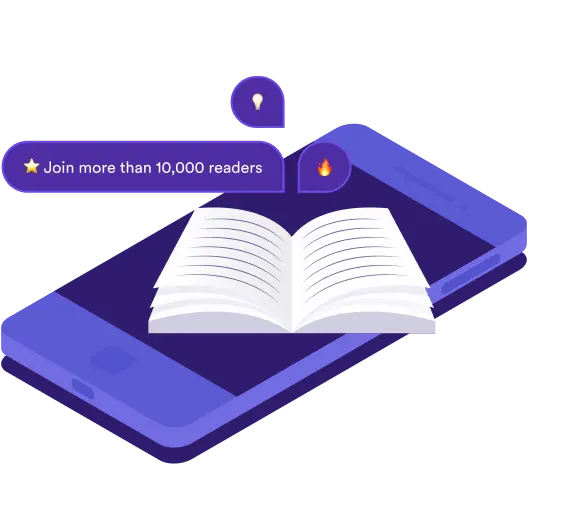Interested in SnackzLAB or SnackzAGENT? 👉🏼 This way!

Enjoying Snackz.ai?
Sign up!
or
I agree to the Privacy Policy and the Terms of Service.
Already have an account?
📩 Check your inbox!
A link to reset your password has been sent to your email address.
Reset Password
No worries! Just enter your email below, and we'll help you reset that password:
Enjoying Snackz.ai?
Sign up!
or
I agree to the Privacy Policy and the Terms of Service.
Already have an account?
📩 Check your inbox!
A link to reset your password has been sent to your email address.
Reset Password
No worries! Just enter your email below, and we'll help you reset that password:
Marilee Sprenger
Where would you like to order?
Please select your country to proceed with the checkout.
⚡ Free 3min Summary
Brain-Based Teaching in the Digital Age - Summary
In 'Brain-Based Teaching in the Digital Age,' Marilee Sprenger explores the intersection of technology and education, providing valuable insights into how the digital landscape affects students' brain development and learning processes. Sprenger, drawing from her extensive experience as a classroom teacher and consultant, offers practical advice on integrating technology into teaching while emphasizing the importance of holistic education. She highlights the need for educators to understand the 'digital brain' and adapt their methods to bridge the digital divide.
Key Ideas
Understanding the Digital Brain
Sprenger emphasizes the importance of recognizing how technology influences students' brain development. She explains that the digital age has altered the way students process information, requiring educators to adapt their teaching methods to align with these changes.
Integrating Technology in Education
The book provides practical strategies for incorporating technology into the classroom. Sprenger offers both high-tech and low-tech solutions to make learning more interactive and effective. She stresses the importance of using technology as a tool to support, rather than replace, traditional teaching methods.
Holistic Education
Sprenger advocates for a well-rounded education that includes not only academic learning but also the development of social-emotional intelligence, creativity, and empathy. She highlights the significance of incorporating activities like exercise, music, and art into the curriculum to foster a more comprehensive learning experience.
FAQ's
The main focus of 'Brain-Based Teaching in the Digital Age' is to explore how technology impacts students' brain development and learning processes. Marilee Sprenger provides practical advice for integrating technology into teaching while emphasizing the importance of a holistic education approach.
Marilee Sprenger suggests that educators need to understand the 'digital brain' and adapt their teaching methods accordingly. She offers strategies for incorporating both high-tech and low-tech solutions into the classroom to make learning more interactive and effective, while also maintaining a balance with traditional teaching methods.
The holistic education approach in 'Brain-Based Teaching in the Digital Age' includes not only academic learning but also the development of social-emotional intelligence, creativity, and empathy. Sprenger highlights the importance of incorporating activities like exercise, music, and art into the curriculum to foster a comprehensive learning experience that supports students' overall growth and success.
💡 Full 15min Summary
We live in a rapidly evolving age where technology has a dramatic influence on how we process data. There are those who have had the benefit of growing up surrounded by gadgets like computers, video games, and smartphones - effectively making them digital natives. Meanwhile, the older generation is still acclimatizing to this digital world, and they are often referred to as digital immigrants. One thing they both share, however, is that their brains are altering to accommodate this influx of technology.
This new digital epoch offers thrilling opportunities for education and social interactions. However, it also sparks worries about the potential losses of crucial human capabilities, including emotional intelligence and inventiveness. Therefore, it's crucial to strike a balance between the advantages and disadvantages of technology.
The mystery to doing so lies in recognizing how technology modifies our brains. Thanks to neuroplasticity, our brains have the incredible aptitude to continuously readjust and rewire themselves. Encouraging the use of technology while not neglecting the value of activities like physical movement, art, music, and play is key in cultivating healthy brains.
It's crucial to appreciate and encourage the development of both high-tech abilities and emotional intelligence in students. This integrated approach helps them thrive in various situations and roles. It is the duty of educators to guide both digital natives and digital immigrants in making thoughtful and beneficial use of technology.
Understanding the impact of technology and finding a balance will assist in the positive development of our brains, preparing us all to tackle the challenges of a rapidly evolving world.
Enjoyed the sneak peak? Get the full summary!
Let's find the best book for you!
AdvertisementSection.TitleNew
AdvertisementSection.SubTitleNew

Get the books directly into your inbox!
✅ New Release
✅ Book Recommendation
✅ Book Summaries
Copyright 2023-2025. All rights reserved.